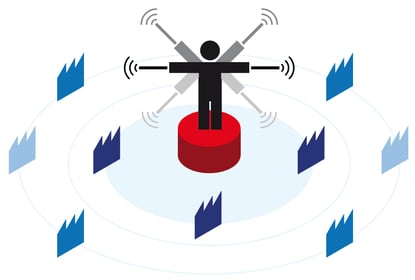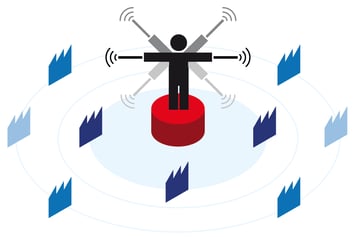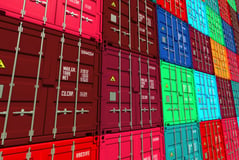How to Maintain Supply Chain Control When Outsourcing
Jesse Kelber - October 17, 2019

 Imagine you’re hosting the family reunion this year. 75 people are going to be expecting a great venue, amazing food, and some planned activities. But you’re just one person, with some help from your girlfriend. Are you going to cook all the food, decorate the community hall, schedule and set up for the band, AND be there to greet everyone as they arrive? I certainly hope not. You’re going to hire a caterer for the food, be sure the band brings their own crew to set up and tear down the stage, and rope your girlfriend into being the greeter so you can still supervise the proceedings. On the other hand, if you’ve got a wife, 3 grown kids with their own significant others, and a circle of close friends, maybe you can do it all in-house. This is the power of outsourcing, it keeps the playing field even for even the smaller players. The question is—how do you maintain control over the cooks, musicians, crew, and cousins?
Imagine you’re hosting the family reunion this year. 75 people are going to be expecting a great venue, amazing food, and some planned activities. But you’re just one person, with some help from your girlfriend. Are you going to cook all the food, decorate the community hall, schedule and set up for the band, AND be there to greet everyone as they arrive? I certainly hope not. You’re going to hire a caterer for the food, be sure the band brings their own crew to set up and tear down the stage, and rope your girlfriend into being the greeter so you can still supervise the proceedings. On the other hand, if you’ve got a wife, 3 grown kids with their own significant others, and a circle of close friends, maybe you can do it all in-house. This is the power of outsourcing, it keeps the playing field even for even the smaller players. The question is—how do you maintain control over the cooks, musicians, crew, and cousins?
Integration
Key number 1 to maintaining control of your outsourced supply chain segments is to ensure that your systems and those used by your new partners are compatible. If you’re looking at upgrading your WMS but IT says the infrastructure can’t handle it, it may be time to outsource your inventory storage needs. And if that’s the case, you’ll need to bring IT into the picture to help ensure the new facilities’ WMS will play nice with your existing systems. If your ERP can’t get info from the WMS, you’re going to be flying blind when it comes time for production planning and forecasting. On the other hand, when the data is flowing freely between the production floor and the new warehouse, you’ll stay on top of your inventory situation allowing for tighter turn arounds and decreasing storage costs.
Keep ROI at the Center of Your Attention
At a basic level, outsourcing is about maximizing ROI. When your logistics costs get out of hand due to unforeseen weather events or fuel costs combined with an aging fleet of trucks, it might be less cost restrictive to cut your losses and outsource transportation. And with the increasing costs associated with last-mile delivery, this is the exact situation facing more and more manufacturers recently. Do the math, or have someone in finance do the math for you, to determine what segments of your supply chain are costing the most. Then see if there’s a better option available in the form of outsourcing that segment. By taking an iterative approach, you can make adjustments as you go, staying on top of the real-time ROI of each choice.
Don’t Lose Track of the Rest of the Chain: Visibility = Control
With the focus on technology in today’s business world, it can be easy to lose track of the humans behind the systems. By closely managing your relationships with the people at every step of the value chain, you stand a much better chance of maintaining the control you need to ensure a smoothly operating supply chain. These human relationships, combined with the visibility of integrated systems is what will ensure you are notified of an upcoming event that may impact your third-party warehouse manager before the movement of your product is disrupted. Those notifications may be in the form of an automated alert from the logistics tracking system, or an email from the warehouse manager, the key is maintaining friendly communication between partners as you develop the digital workflows.
In order to have complete visibility into your supply chain, you need that unique combination of human relationships and insight into the workflows behind the data. To go back to our family reunion example: if you take the time to get to know the caterer, chances are they’ll be more likely to give you a heads up if they get stuck in traffic on the way to the event. That gives you the chance to adjust the schedule and have the band set up first, leaving the loading dock free for when the food does arrive. Similarly, if your logistics planner has your cell phone number, they’re that much more likely to let you know of a weather event hitting their hub and allowing you to adjust production accordingly to avoid having a backlog of product sitting on the docks waiting for trucks that aren’t coming until tomorrow. Data transparency can only get you so far in an industry that is still highly dependent on the people behind the scenes.
Scalability is Crucial
Knowing how much of the supply chain to outsource, and how much to keep in-house, is an often overlooked key to success. This piece is about maintaining control over outsourced segments of the chain, however, if you overdo it and send multiple pieces to a partner at one time, you’re cutting the likelihood of being able to maintain that control. Find providers to partner with who understand your business, your projected growth, and your goals for the outsourcing project. This understanding will help them scale to your precise needs now, and be ready to scale up alongside your company as you grow. Only need 10,000 linear feet of shelf space right now, but projections say you’ll be at 50,000 by the end of the year? Be sure your strategic partner is ready and able to handle that kind of up-scaling.
“Supply chain” is an often misunderstood term. Some folks believe it only includes certain departments within the company, like production and shipping, not understanding the role every department plays. This can lead to further misunderstandings when it comes time to outsource pieces of that supply chain, since if they don’t realize their own role in the chain, what are the chances they’ll understand how outsourcing will work? Supply chain outsourcing is growing in popularity with the rise of the global marketplace and, indeed, the often global nature of the supply chain itself. Whether you’re hoping to maximize ROI or maintain customer satisfaction, outsourcing certain segments of the value chain is often an attractive option.
LATEST POSTS
- Understand Circular Economy in The Manufacturing Industry
- How Can Industry 4.0 IT Integration Be Achieved Smoothly?
- The Significance of Order Sequencing in Discrete Manufacturing
- How to improve your Supply Chain Management: The Power of Control Towers
- Optimizing Human Resource Scheduling in Manufacturing: A Technological Approach



